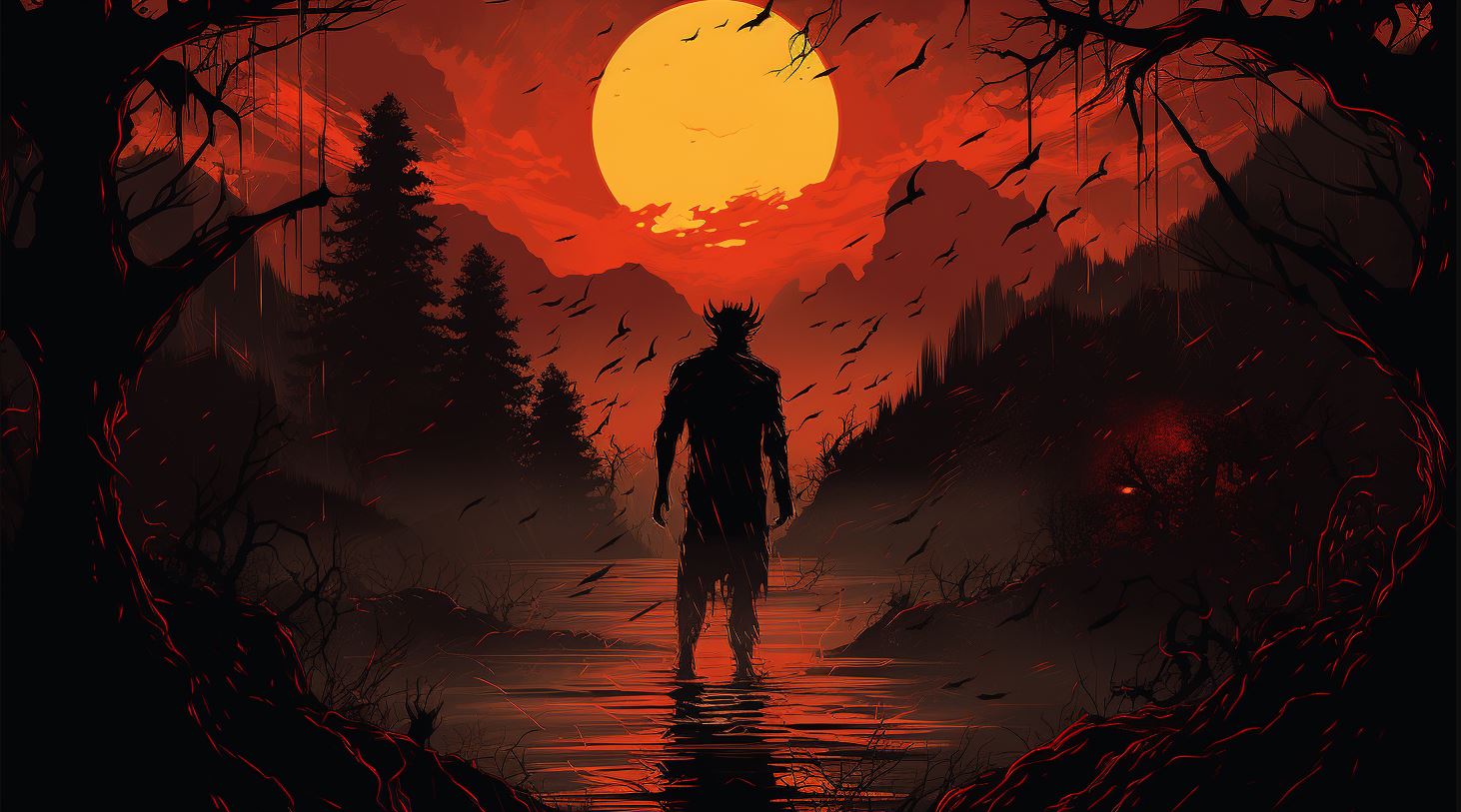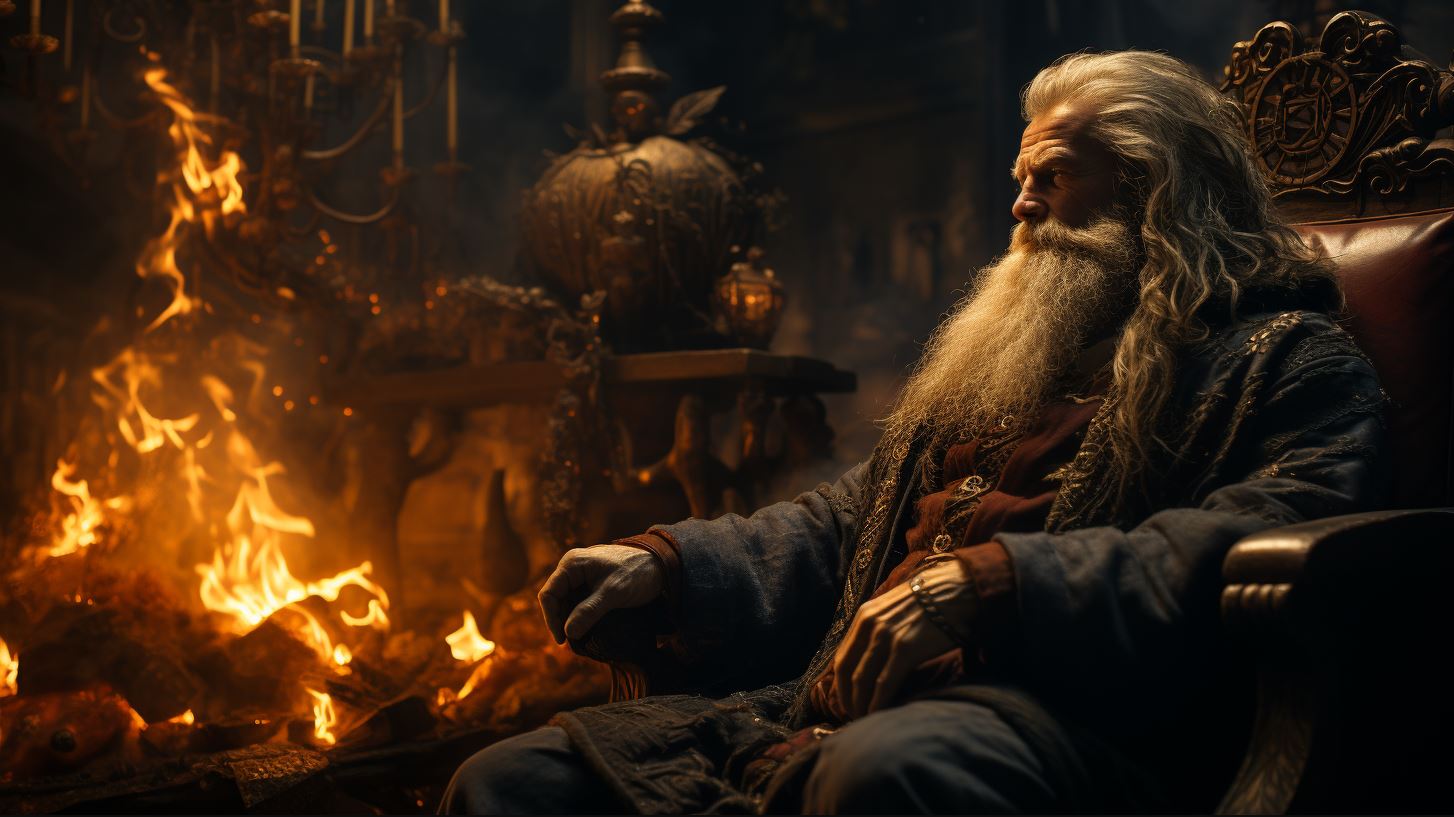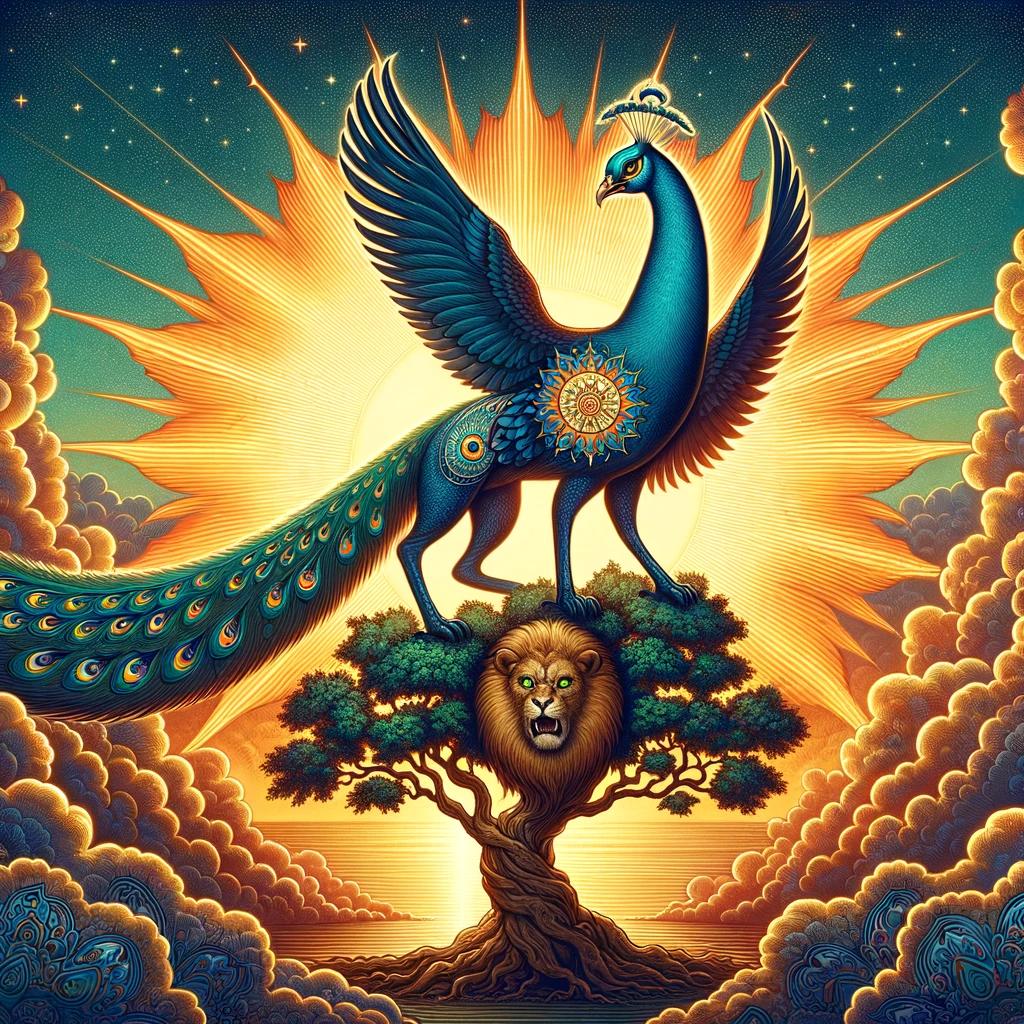‘Daeva Demon: Unveiling the Dark Entities of Zoroastrian Folklore’

Daevas, powerful dark entities in Zoroastrian tradition, hold a significant role in the ancient Persian worldview. Originating from diverse interpretations, these malevolent beings are considered enemies of divine order, often associated with chaos and malevolence.
Symbolizing various forms of evil, they are followers of Ahriman, the malicious spirit in Zoroastrianism. Iranian folklore and literature, particularly in the epic Shahnameh, depicts daevas as otherworldly creatures who cause suffering and interference in human lives.
Interestingly, the perceptions and meaning of daevas have evolved over time, leading to controversies and varied interpretations in modern contexts.
Daevas in Zoroastrian Tradition
Daevas hold a significant position in Zoroastrian tradition, representing dark and malevolent entities within ancient Persian beliefs. This section delves into the origins and interpretations surrounding these beings, their roles and characteristics in Zoroastrianism, as well as their comparison with Vedic deities.
Origins and Interpretations
The origins of daevas are rooted in the oldest texts of the Zoroastrian canon, where they were initially regarded as gods to be rejected. However, there are some interpretive challenges regarding how daevas were viewed in ancient Persia prior to Zoroastrianism.
Hypotheses suggest that daevas were the pre-Zoroastrian Iranian ‘national’ gods, ultimately rejected by Zoroaster.
Role and Characteristics in Zoroastrianism
In the Avesta, the younger texts of the Zoroastrian canon, daevas are depicted as divinities that promote chaos and disorder. They are considered enemies of the divine order, embodying dangerous and deceitful characteristics.
It is believed that they spread chaos and evil throughout the world, personifying various forms of imaginable wickedness.
Comparison with Vedic Deities
In the Rigveda, an ancient Indian text, and subsequent Iranian texts, there is a prominent conflict between the groups of devas and asuras. However, this theme does not appear in Zoroastrian texts.
While the terms ‘asura’ and ‘deva’ possess ambiguity in Indian usage, in Iranian texts, daevas were originally regarded as gods and only evolved into malevolent creatures in later texts.
The Dark Nature of Daevas
The daevas in Zoroastrian mythology embody malevolence, chaos, and disruption.
They are regarded as adversaries of divine order, representing the antithesis of goodness and righteousness. This section explores the sinister nature of the daevas and delves into their role in the Zoroastrian belief system.
Malevolence and Chaos in Zoroastrian Mythology
The daevas are intrinsically associated with malevolence and the proliferation of chaos within Zoroastrian mythology. They are notorious for promoting wickedness, turmoil, and disorder. These malevolent entities are believed to personify all imaginable forms of evil, contributing to the suffering and misery experienced by humanity.
Daevas as Enemies of Divine Order
Considered enemies of the divine order, daevas actively work against the forces of goodness and righteousness. They embody deceit, danger, and temptation, lurking in the shadows to prey upon vulnerable individuals.
Their actions destabilize the harmony between the cosmic and earthly realms, perpetuating a perpetual battle between light and darkness.
Symbolism and Representations of Daevas
Daevas are symbolic beings who embody various manifestations of evil and negativity. They serve as metaphors for diseases, sins, and suffering that plague humanity. Represented as dangerous and deceptive creatures, daevas often take the form of supernatural entities that interfere in the lives of humans, inflicting hardships and misfortune.
The symbolism surrounding daevas underscores their malevolence and the constant struggle against their influence. In Iranian folklore and literature, they are depicted as formidable adversaries who sow discord and misery, personifying the darkest aspects of existence.
The Influence of Ahriman and Evil Spirits
The dark and malevolent forces of Ahriman, commonly known as the Prince of Malevolent Entities, hold significant influence over the daevas. Ahriman, in Zoroastrian belief, stands as the embodiment of evil, opposing the forces of good.
As the leader of the dark entities, he created the daevas to work against goodness and humanity.
Ahriman: The Prince of Malevolent Entities
Ahriman’s role as the principal malevolent spirit in Zoroastrianism showcases his destructive nature. He is believed to personify all the vices, ailments, and suffering experienced by humanity. This dark figure represents the antithesis of Ahura Mazda, the supreme deity of Zoroastrianism, and aims to undermine order and righteousness.
Role of Daevas as Followers of Ahriman
The daevas, as loyal followers of Ahriman, carry out his sinister intentions. Their allegiance to the malevolent prince drives them to spread chaos and misery in the world. These daevas personify various forms of evil and serve as instruments of Ahriman’s wickedness, perpetuating his agenda to overthrow divine order.
The Impact of Daevas on Human Existence
Daevas, embodying the essence of malignancy, pose a constant threat to humanity. They lurk in the shadows, patiently waiting to strike vulnerable individuals with their deceiving and dangerous nature. The impact of these malevolent creatures on human existence brings forth suffering, turmoil, and misfortune, disrupting the natural harmony intended by the divine.
Daevas in Iranian Folklore and Literature
Iranian folklore and literature are rich with supernatural beings and mythical creatures, among which the daevas hold a significant place. They feature prominently in the epic poem “Shahnameh,” also known as the “Book of Kings,” penned by Ferdowsi in the 10th century.
The Shahnameh: Supernatural Beings in Iranian Epic
The Shahnameh narrates the stories of ancient Persian heroes, mythical creatures, and gods in a poetic and epic manner. Within its verse, the daevas are often portrayed as powerful and otherworldly beings whose interference in the lives of humans triggers a series of unfortunate events and trials.
Daevas’ Interference and Suffering Inflicted on Humans
According to Iranian folklore, daevas are known for their ability to cause havoc and inflict suffering on mortals. They possess an array of malicious powers, capable of manipulating events and orchestrating chaos.
Their interference in human affairs often leads to tragedy, sorrow, and adversity.
- People are plagued by misfortune, diseases, and hardships, all attributed to the malevolent actions of daevas.
- They are believed to influence human destinies, creating obstacles and obstacles in one’s path.
- Legends depict daevas as cunning and deceptive creatures, preying on the vulnerable and leading them astray.
Cultural Significance and Depictions of Daevas in Folklore
Daevas hold a significant place in Iranian folklore, reflecting the cultural beliefs and values of ancient Persia.
They serve as cautionary figures, symbolizing the dangers of succumbing to evil influences and straying from the path of righteousness.
- Their depiction in folklore often highlights the importance of resisting temptation and upholding moral values.
- Artistic representations portray daevas as fearsome entities, adorned with monstrous features and exuding an aura of malevolence.
- Their presence in traditional tales and myths serves as a reminder of the ongoing struggle between good and evil.
In conclusion, within Iranian folklore and literature, daevas are regarded as formidable supernatural entities that play a pivotal role in shaping the destinies of humans.
Their interference often leads to suffering and serves as a reminder of the constant battle between darkness and light.
The Evolution and Controversies Surrounding Daevas
The belief and understanding of daevas in Zoroastrian tradition have undergone historical reinterpretations and shifts, leading to controversies and varied perceptions over time. This section explores how the concept of daevas has evolved and the debates surrounding their significance in different periods.
Historical Interpretations and Shifts in Zoroastrian Tradition
Throughout history, the interpretation of daevas in Zoroastrianism has undergone significant changes. In ancient Persia, daevas were considered national gods, but with the emergence of Zoroastrianism, their status shifted to that of malevolent entities that humanity should reject.
The teachings of Zoroaster influenced the perception of daevas, leading to their categorization as dangerous and chaotic beings.
Varied Perceptions and Meanings of Daevas Over Time
Over the years, different interpretations and meanings have been attributed to daevas. In ancient texts like the Avesta Joven, daevas are associated with promoting chaos and disorder. However, in later Iranian literature, daevas are seen as malevolent creatures personifying various forms of evil.
These shifting perceptions reflect the evolving understanding of daevas and their role in Zoroastrian belief.
Modern Relevance and Understanding of the Daeva Demon
In contemporary times, the understanding of daevas has been subject to academic and religious debates. Scholars continue to explore the significance of daevas in Zoroastrianism and their relevance in modern religious discourse.
The study of daevas contributes to a deeper understanding of ancient Persian beliefs and sheds light on the complexities of religious evolution.
In conclusion, the concept of daevas in Zoroastrian tradition has witnessed historical reinterpretations and shifts, leading to varied perceptions and ongoing controversies.
Understanding the evolution of daevas provides insights into the complex dynamics of religious belief and its cultural implications.
- Important points to consider:
- – Evolving interpretations of daevas in Zoroastrian tradition
- – Shift from national gods to malevolent entities
- – Varied meanings attributed to daevas over time
- – Academic and religious debates on modern relevance
- – Contribution to understanding ancient Persian beliefs
.




















